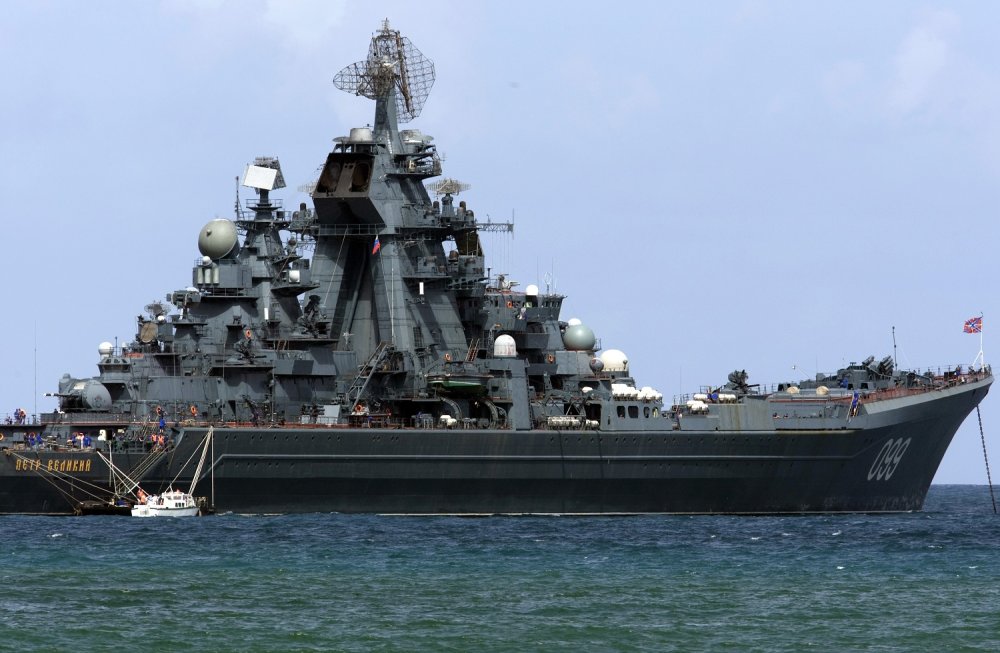
The Russian Navy Has Some Problems
Yes, they received 23 new ships this year. That's where the good news ends.
by David AxeThe Russia fleet in 2019 will take delivery of 23 new surface vessels, two new submarines and three new aircraft, Russian president Vladimir Putin announced.
The numbers on their face are impressive. But in fact, most of the surface ships are small warships and support vessels. As such, 2019 continues the Russian fleet’s long-term trend toward fewer and smaller ships.
“We have paid and will pay the closest attention to the technical re-equipment of the armed forces, including, of course, the modernization of the Russian navy,” Putin said at a Dec. 3, 2019 meeting of top military and industry officials.
“As part of the state defense order this year, the navy will receive more than 480 basic types of weapons and equipment,” Putin added. “Among them, two submarines, 23 surface ships and support vessels, three aircraft, four coastal missile systems and more than 400 units of various missile and torpedo weapons.”
Putin highlighted the submarine acquisition. The Russian fleet is building new ballistic-missile and attack submarines as part of a broader effort to maintain a force of around 50 subs. The navy will receive one new Borei-class ballistic-missile boat, the Prince Vladimir, Putin said.
Russian defense minister Sergey Shoigu in early 2019 predicted that, in addition to the Borei, the fleet would receive a Yasen-class nuclear-powered attack submarine as well as a Lada-class diesel-powered attack boat.
But Putin’s comments seem to imply at either the Yasen or Lada is late and won’t deliver in 2019.
Putin also singled out the fleet’s new Kalibr cruise missile. With a range of around a thousand miles, the Kalibr allows ships and submarines to attack distant land targets without leaving the relative safety of Russia’s coastal waters. Putin said the fleet by 2023 would double its Kalibr arsenal.
Missiles and submarines aside, the Russian navy’s modernization in 2019 actually is modest. Of the 23 new surface ships, just seven are armed combatants. One is a Gorshkov-class frigate displacing around 4,500 tons of water. The other six are missile corvettes displacing no more than a couple thousand tons of water.
In taking delivery of only one large surface combatant in all of 2019, the Russian fleet continues its slow decline from a true oceangoing force operating large, long-range battlecruisers and destroyers to a largely coastal force operating small, short-range vessels.
As it transforms, the Russian navy by most metrics is falling behind the U.S. and Chinese navies. In 2019 the Russian fleet has 360 ships, according to U.S. Navy commander Keith Patton, writing for the Center for International Maritime Security. The Chinese fleet, by contrast, possesses 624 warships.
The U.S. Navy in 2019 operates just 333 “battle force” ships, while Military Sealift Command possesses around 120 large auxiliaries. American ships on average are much bigger than Chinese and Russian ships are. The U.S. fleet in total displaces 4.6 million tons of water. The Chinese fleet displaces 1.8 million tons. The Russian fleet displaces just 1.2 million tons.
Perhaps most tellingly, the U.S. fleet can carry around 12,000 offensive missiles. Chinese ships in total can carry 5,200 missiles. Russia’s fleet packs no more than 3,300. And that number could fall as more large, old warships decommission and smaller ships take their place.
The U.S. fleet slowly is growing. In 2019 it anticipates taking delivery of 11 new, large ships including three nuclear-powered attack submarines. An Arleigh Burke-class destroyer, three of which should join the American fleet in 2019, displaces more than 9,000 tons of water.
Where the Russian fleet in 2019 received just three new aircraft, the U.S. fleet in the same year should receive no fewer than 90 new planes and helicopters.
“In general, the share of modern weapons in the navy is 68 percent,” Putin boasted. But for all of its new weaponry, the Russian fleet still is getting smaller while also gradually losing its ability to operate far from shore.
David Axe serves as Defense Editor of the National Interest. He is the author of the graphic novels War Fix, War Is Boring and Machete Squad.